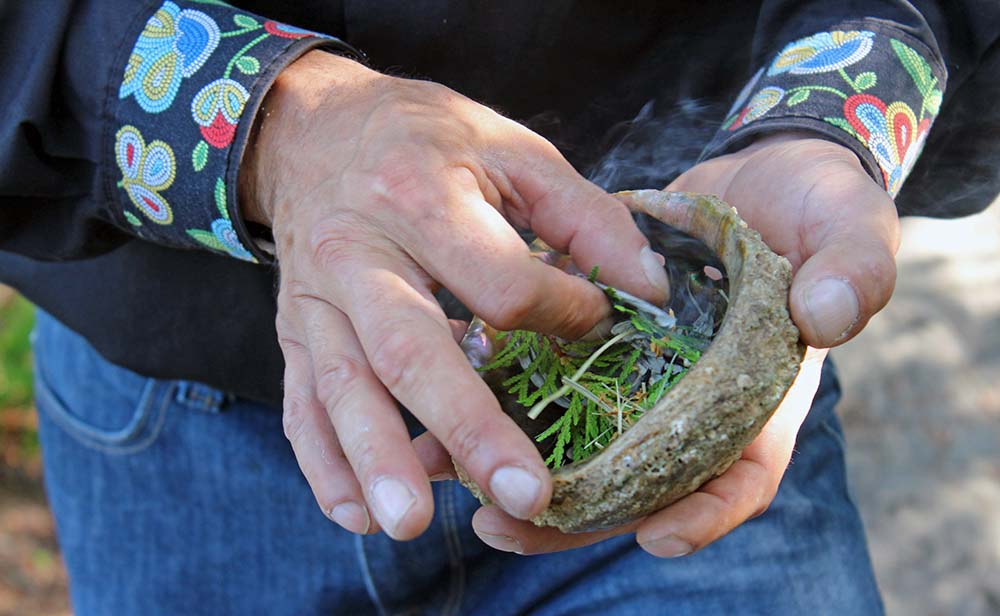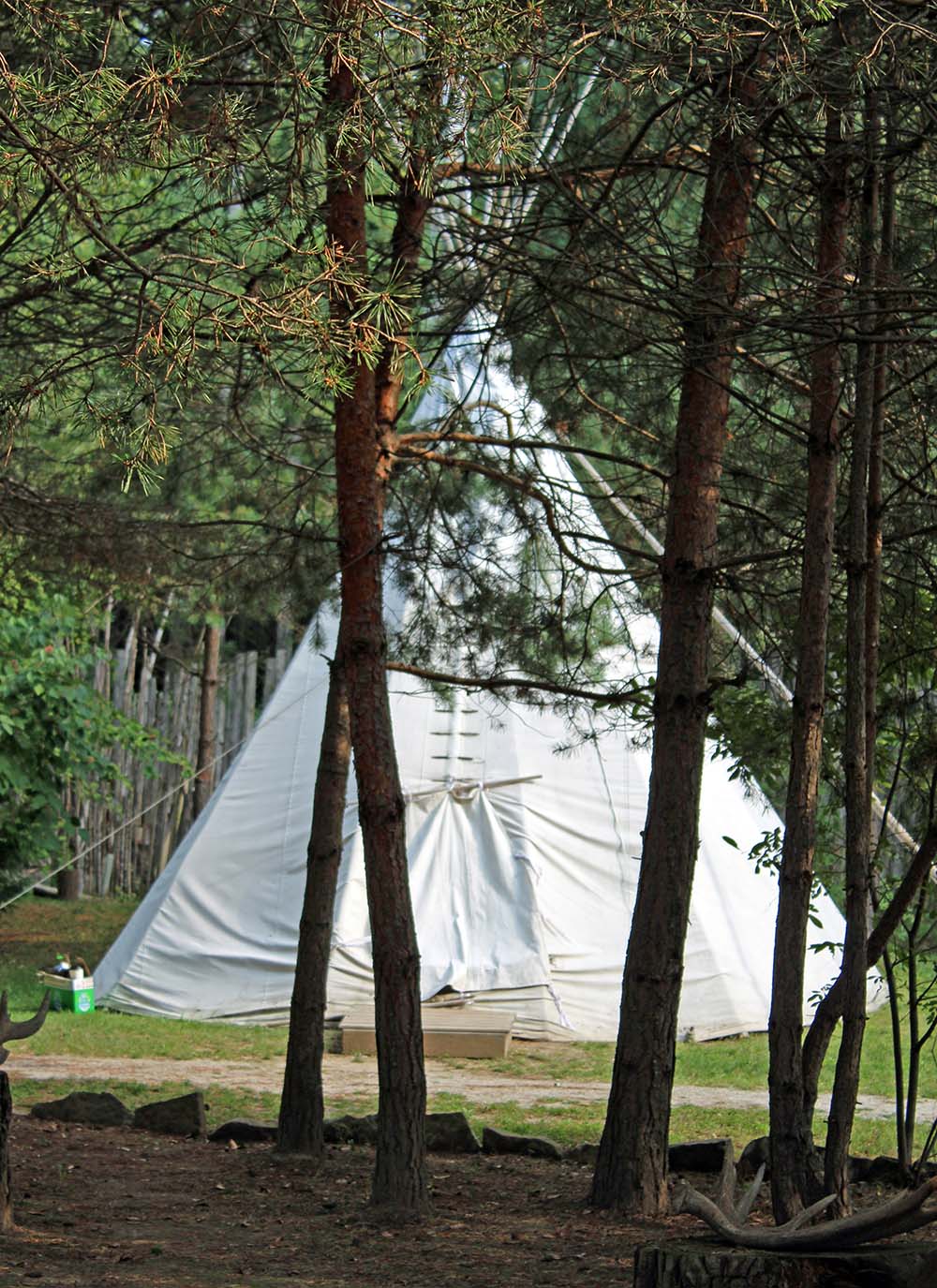Adam Waxman is an award winning travel journalist focusing on…
Tassles dangle from a tightly woven dream catcher and gently sway in the breeze. “Do you know what a dream catcher is?” I ask my son. “Do you know where it comes from?” He gazes, wide-eyed, at the teardrop-shaped willow hoop; its web, gleaming as the sun sets through his bedroom window. I begin telling him stories of the Ojibwe nation, and the Anishinabek people that encompassed the Great Lakes. They created the dream catcher to protect their young from bad dreams, catching them in its net, “So only sweet dreams will reach you.” He drifts off to a peaceful sleep.
When I was a child, First Nations’ cultures and arts were not taught in public school. I wanted to find a place where I could learn. How can we teach the beauty of our land without learning its spirituality from those who commune with it? So, I went to The Great Spirit Circle Trail in M’Chigeeng, Manitoulin Island.
 Sitting on the edge of the Cup and Saucer Trail, my guide, Steven Antoine, shares with me the legends of his Woodland heritage and this “Island of the Great Spirit,” Manitoulin. I am amazed. I tell him I’m an avid canoeist. He informs me that the iconic “Canadian” canoe originated right here. His people learned how to make the canoe from the Carib and Arawak nations of the Caribbean. They originated the Kanyuu, meaning, “dug out.” This was how they island-hopped. “But we made it out of birch, because it was waterproof and light for portaging between lakes,” he tells me. That is what the spirits within these trees instructed them to do. “We used spruce for lashes, balsam sap for gumming up the ends of the canoe, and cedar for our paddles, because it was light and resilient.” Manitoulin offers the largest freshwater lake in the world with beautiful sunrise and sunset paddling.
Sitting on the edge of the Cup and Saucer Trail, my guide, Steven Antoine, shares with me the legends of his Woodland heritage and this “Island of the Great Spirit,” Manitoulin. I am amazed. I tell him I’m an avid canoeist. He informs me that the iconic “Canadian” canoe originated right here. His people learned how to make the canoe from the Carib and Arawak nations of the Caribbean. They originated the Kanyuu, meaning, “dug out.” This was how they island-hopped. “But we made it out of birch, because it was waterproof and light for portaging between lakes,” he tells me. That is what the spirits within these trees instructed them to do. “We used spruce for lashes, balsam sap for gumming up the ends of the canoe, and cedar for our paddles, because it was light and resilient.” Manitoulin offers the largest freshwater lake in the world with beautiful sunrise and sunset paddling.
Antoine reaches into his medicine bag and pours sacred herbs into an abalone shell, lighting them into a smoky perfume. Cupping the smoke in the palm of my hands, I wash it over my face and my heart. This is the traditional smudging ritual to wash away anxiety and distraction, purify and re-engage our internal spirit to the spirit of nature. Sage is for strength, wisdom and clarity; cedar is for positive energy; sweet grass is for repelling negative energy; and tobacco is for giving thanks and connecting the Earth and Spirit worlds.
Hiking along our Medicine Walk, Antoine plucks sumac berries into his mason jar. It will compose a red-hued remedial tea. He gently places the sumac branch on an anthill. It will soon be cored out into a perfect pipe. He then shows me balsam needles that can be used for mattresses, teas and smoking meat, and balsam sap that, when applied to a sore, along with moss for a bandage, will promote healing. Nature truly is a mother. “We believe the Great Spirit put all these trees and animals here for us and, with it, everything we need.”

All the life force that Manitoulin provides, the sustenance and the medicine are what drew the semi-nomadic Anishinabek here so long ago. The Ojibwe, the Odawa and the Potawatomi tribes that make up the Three Fires Confederacy came here to forage and trade. They lived and traveled between wigwams—perhaps the world’s first time-share program. As plants have their seasons, so too does each have its own window for gathering. “We were always travelling to those windows and utilizing them to gather what we needed,” Antoine shares. “You have to know when that window is open, because if you miss it, you have to wait until the next year for that window to come back; so we had to move to those windows.”
Back at the camp, night falls on the crisp air, stars splash the sky, and we light up a fire around which the exhilarating Voice of the Drum beats. Native songs are sung and local stories told. Cozy in my tipi, I feel like I’m in some far away land, and yet…this is Ontario.
Up with the sun, we stroll the perimeter lined with a garden of medicinal herbs. For morning tea I pick cedar, mint and lemon balm. For breakfast we bake bannock over an open fire, and spread maple syrup, local strawberries, raspberries and cherry jam. Our spirits are engaged. We see, smell, touch and taste the spirit of nature.

In the wigwam one can learn to make local artwork and crafts like native drums, medicine bags, mini birch bark canoes and dream catchers. This is why I came here—for a hands-on discovery of a living heritage, integral to our foundation and our unique place in the world, and from which to engage in some spiritual connection that I could bring home. “What would you like to do next?” Antoine asks. I reply, “Could you teach me how to make a dream catcher for my son?”
Read More
- Ottawa: Capital Cool
- 1000 Islands: Hidden Gems
- Windsor, Wine, Whisky in Ontario’s Southwest
- Take Me to the River
- Among The Pines, in Algonquin
- Red Lake: Northern Exposure
- 12 Bucket List Ontario Experiences
Adam Waxman is an award winning travel journalist focusing on food, wine and well being. As well as an actor in film, television and formerly, the Stratford Festival, he is the Publisher of DINE and Destinations magazine.




